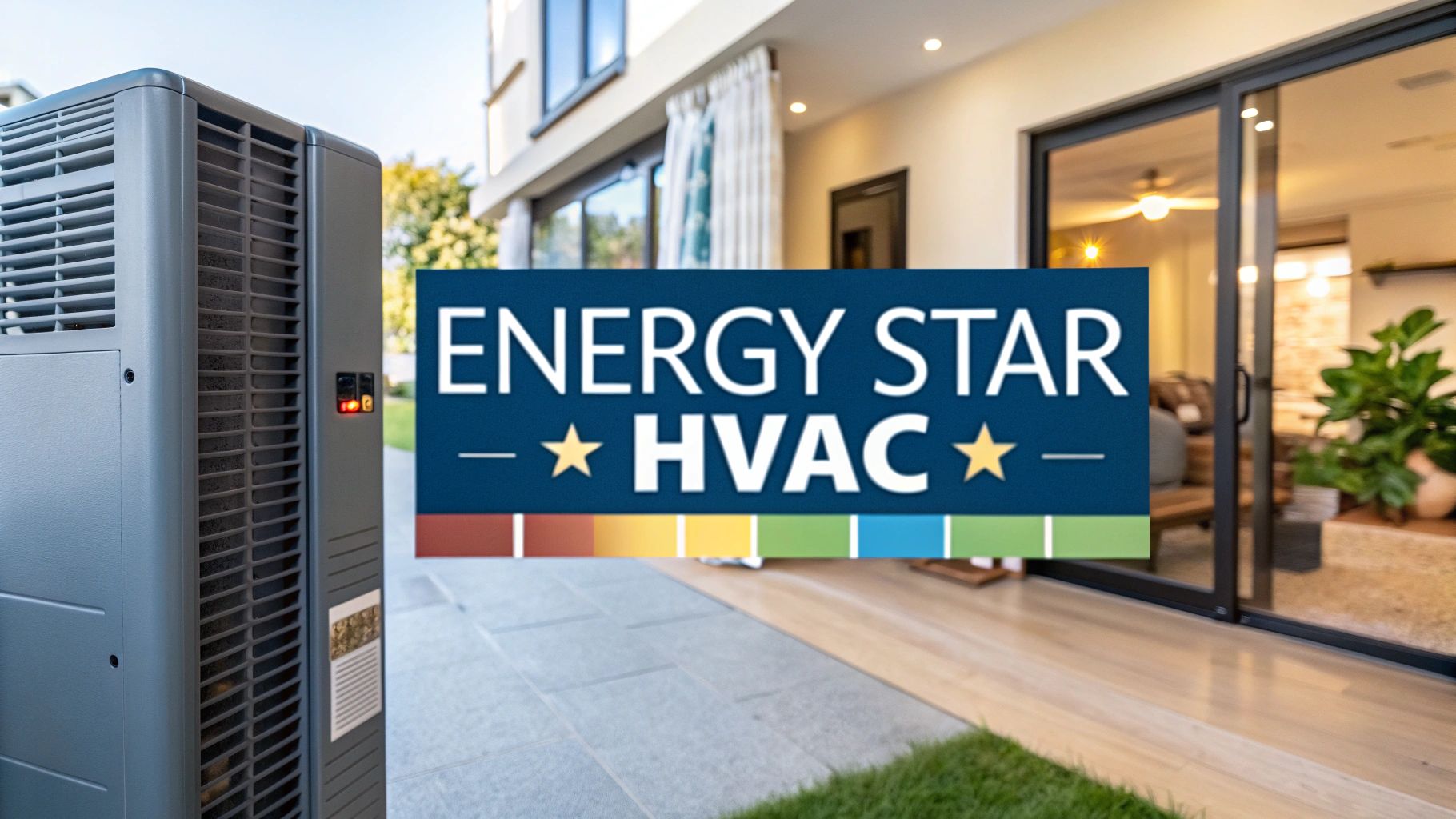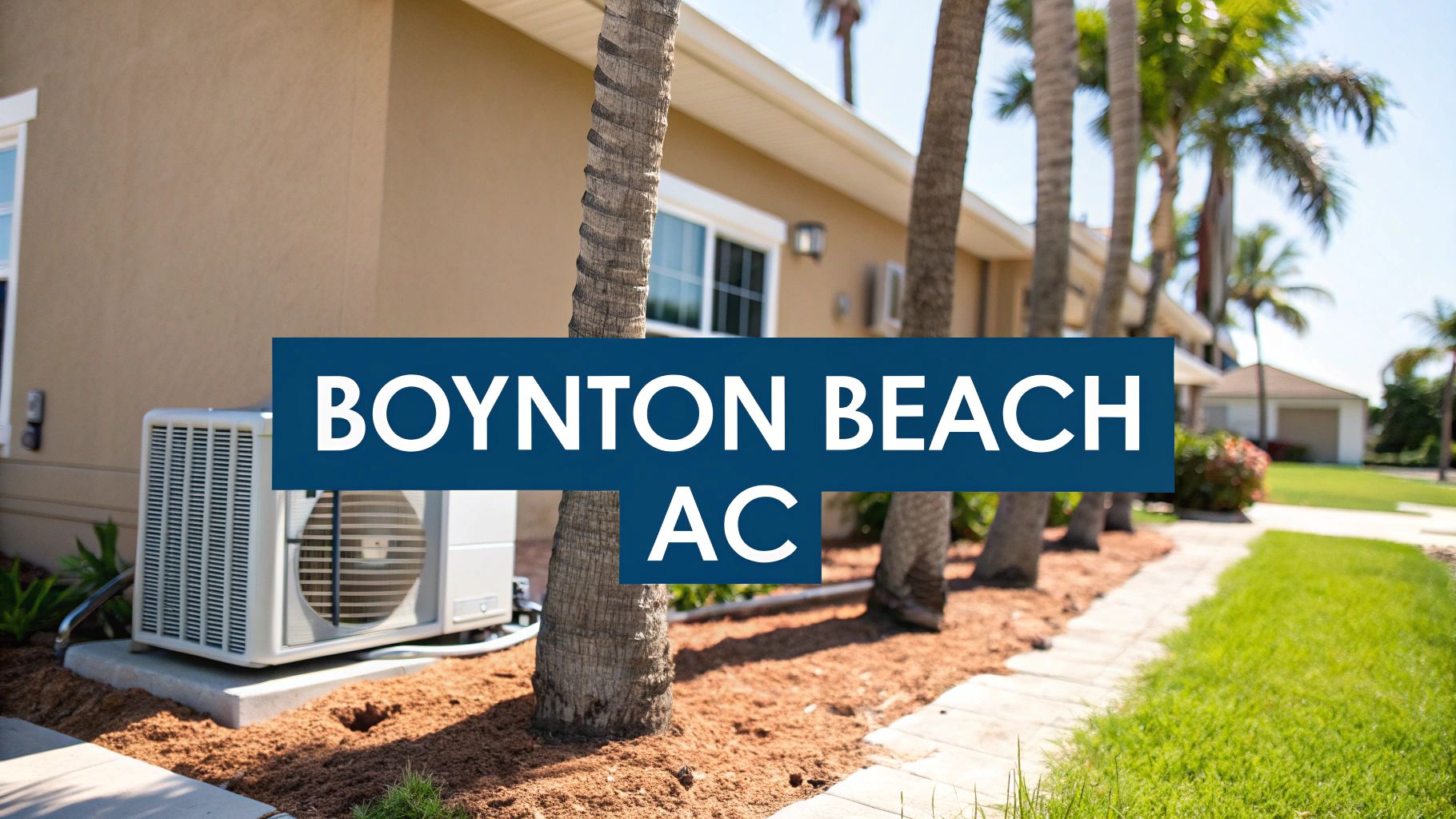So, what exactly is an Energy Star HVAC system?
Think of it as a heating and cooling unit that's passed a tough set of energy-saving tests created by the U.S. Environmental Protection Agency (EPA). It's a lot like choosing a fuel-efficient car; you get all the performance you need, but it uses far less energy to get the job done. This saves you money and is better for the environment.
Decoding the Energy Star Label
That little blue Energy Star sticker you see on appliances is a big deal. It’s not just for show—it’s your proof that the system is built for high efficiency.
To earn that label, an HVAC system has to be significantly more efficient than a standard, basic model—often by 15% or more. This isn't just a marketing claim; it's a certification backed by hard data and specific performance metrics. For you, the homeowner, it means you're getting a system specifically engineered to cut down on wasted energy.
What Those Efficiency Ratings Really Mean
When you start shopping, you'll run into acronyms like SEER2 and HSPF2. They might look technical, but they're just simple ways to measure how efficiently a system runs.
Here’s a quick breakdown:
- SEER2 (Seasonal Energy Efficiency Ratio 2): This number tells you how efficient the air conditioner is at cooling. The higher the SEER2 rating, the less electricity it needs to cool your house. It’s basically the air conditioning version of a car's miles-per-gallon (MPG).
- HSPF2 (Heating Seasonal Performance Factor 2): This one is for heat pumps, and it measures how efficiently they heat your home. Just like with SEER2, a bigger HSPF2 number means you're getting more heat for your buck.
The whole point of energy star hvac systems is to give you maximum comfort for minimum energy use. When you pick a certified model, you're choosing a product that's been proven to perform better.
At the end of the day, these ratings take the guesswork out of comparing different units. They give you a clear, apples-to-apples way to see which system will work smarter, keeping your home comfortable while being kinder to your wallet and the planet.
The Real-World Benefits of an Energy Star Upgrade
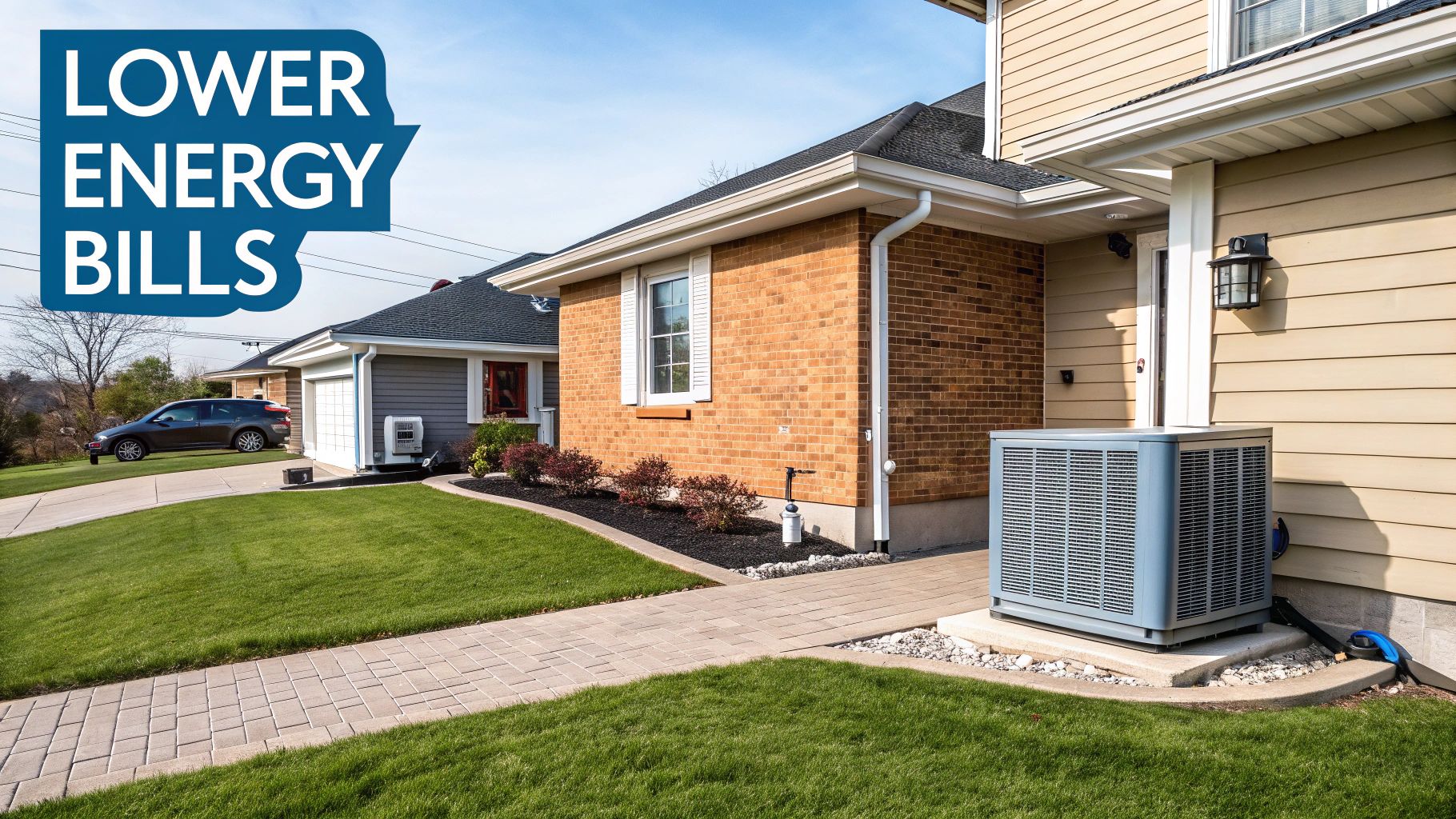
When you look past the technical specs and government labels, upgrading to an Energy Star HVAC system brings some very real, tangible improvements to your daily life. We're not just talking about mechanics; we're talking about your wallet, your comfort, and your impact on the environment. It’s these three core advantages that make the investment a no-brainer for most homeowners.
The first thing you’ll notice—and appreciate—is the drop in your monthly energy bills. Older, clunky systems are energy hogs, working way too hard to heat and cool your home. An Energy Star model is engineered to do the same job using a whole lot less power.
If you want to see what this looks like for your budget, you can forecast your energy usage and bills to get a clearer picture of the savings.
Enhanced Home Comfort
Next up is the comfort factor. So many people with older units put up with frustrating temperature swings—you know, the stuffy upstairs and the freezing-cold downstairs. Energy Star systems are designed for consistent air distribution, which finally gets rid of those annoying hot and cold spots.
They also do a much better job of managing indoor humidity, which is a huge deal in climates like Florida. The result is a home that just feels more pleasant and healthier.
An Energy Star system isn't just about saving money; it's about creating a consistently comfortable and healthy space for your family to live in. Better airflow and humidity control make a noticeable difference.
A Smaller Environmental Footprint
Finally, choosing an Energy Star certified unit is a move you can feel good about. By using less energy, you’re directly lowering your home's carbon footprint. It’s a simple way to contribute to a healthier planet without giving up an ounce of comfort.
This switch to certified equipment slashes energy use by 15-30% compared to standard units. That translates into major savings for you and a big reduction in emissions for everyone. You can find out more about these trends and learn more about HVAC energy stats in 2025.
How to Choose the Right Energy Star HVAC System
Picking the perfect Energy Star HVAC system can feel overwhelming, but it really boils down to a few key decisions. The trick is to find a unit that’s not just efficient on paper but is truly the right fit for your home. That’s how you’ll get the comfort you crave and the savings you expect.
Start With Sizing: The Most Critical Step
Before you look at any models or brands, the single most important factor is getting the size right. A system that’s too big will constantly turn on and off, wasting energy and wearing out parts. One that’s too small will run nonstop and never quite keep you comfortable.
This is why you should always insist that your contractor perform a Manual J load calculation. This isn't a quick guess; it's the industry-standard method for figuring out exactly how much heating and cooling your home needs. The calculation takes everything into account—square footage, insulation levels, window quality, and even your local climate.
Match the System to Your Climate
Where you live dramatically changes what "efficient" means. The ideal system for a home in sunny Florida is completely different from one needed for a frigid Minnesota winter. This is where those efficiency ratings on the yellow sticker really come in handy.
- For Hot Climates: Your top priority should be a high SEER2 (Seasonal Energy Efficiency Ratio 2) rating. The higher the SEER2, the less electricity your air conditioner needs to cool your home, which is a huge deal during a long, sweltering summer.
- For Cold Climates: If you're looking at a heat pump, the HSPF2 (Heating Seasonal Performance Factor 2) rating is what matters most. A higher HSPF2 means it's more efficient at heating. For furnaces, you'll want to look for a high AFUE (Annual Fuel Utilization Efficiency).
Of course, the best equipment in the world won't work well without proper installation and ductwork.
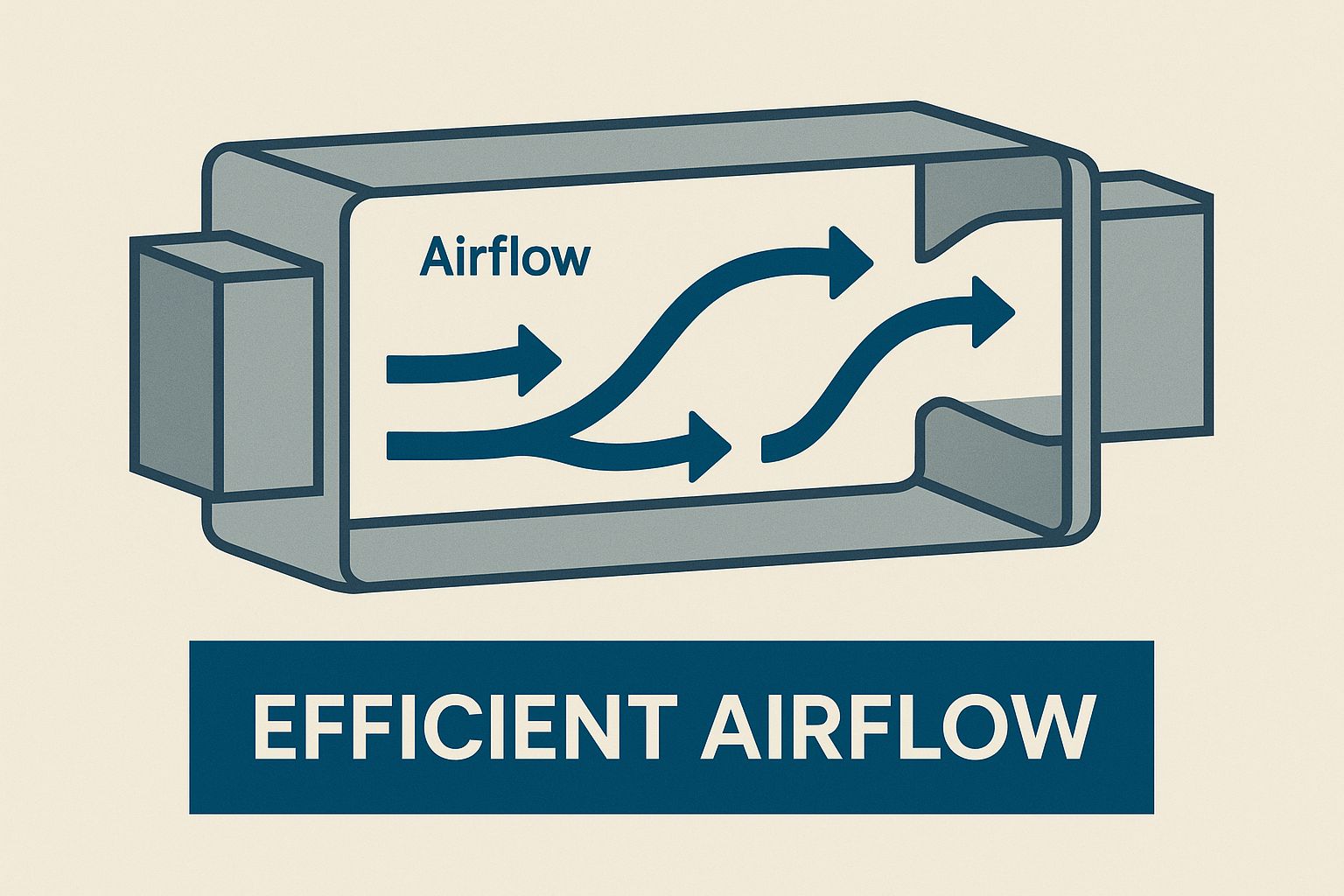
As you can see, things like leaky ducts or poor airflow can cripple your system's performance, no matter how efficient the unit itself is.
Comparing Energy Star HVAC System Types
To help narrow down your options, it’s useful to understand the main types of systems and where they shine. Each has its own strengths depending on your home's layout and your local climate.
| System Type | Best For | Key Feature | Typical Efficiency Gain |
|---|---|---|---|
| Central Air Conditioners | Homes with existing ductwork in hot climates. | Pairs with a furnace or air handler for whole-home cooling. | 15-20% more efficient than older models. |
| Heat Pumps | Moderate to hot climates needing both heating and cooling. | Moves heat instead of creating it, making it highly efficient. | Can cut electricity use for heating by up to 50%. |
| Ductless Mini-Splits | Homes without ducts, or for zoning specific rooms. | Individual air handlers for customized comfort and efficiency. | Can be 30% more efficient than traditional systems. |
| High-Efficiency Furnaces | Homes in cold climates with existing ductwork. | Advanced designs that extract more heat from the same fuel. | Models with 95% AFUE or higher save significant fuel. |
This table gives you a starting point for discussions with a qualified HVAC professional, who can help you determine the absolute best choice for your specific situation.
Your HVAC Selection Checklist
When you start meeting with contractors, having a few key questions prepared can make all the difference. This is especially important if you're trying to figure out the right time to make a change. For a deeper dive, check out our guide on when to replace an HVAC system.
Here’s a simple checklist to keep you on track:
- Confirm the Manual J Calculation: The first question you should ask is, "Will you be performing a Manual J load calculation?" The answer should always be yes.
- Ask for Multiple Options: A good contractor will provide quotes for a few different systems, allowing you to compare efficiency levels and features against your budget.
- Check for Rebates: Always ask which models qualify for federal tax credits or rebates from your local utility company. This can save you hundreds, or even thousands, of dollars.
- Verify Installer Credentials: Make sure any contractor you consider is licensed, insured, and has plenty of experience installing Energy Star HVAC systems. A great installation is just as important as the equipment itself.
That higher price tag on a new energy star hvac system can be intimidating, but it's almost never the final price you'll actually pay. It's best to think of that initial cost as a starting point before all the discounts kick in.
Government agencies and your local utility company really want you to make energy-efficient upgrades, and they're willing to put their money where their mouth is. They offer some pretty significant rebates and credits to make these high-tech systems more affordable for everyday homeowners.
These financial perks come from a few different places, and the best part is they often stack on top of each other, leading to some serious savings.
How to Find and Claim Your Savings
You can find these money-saving opportunities at the federal, state, and even local levels. You just need to know where to look.
-
Federal Tax Credits: Uncle Sam often gives a nice reward for installing qualifying high-efficiency HVAC equipment. These aren't just deductions; they are true tax credits that reduce what you owe, dollar-for-dollar. You can find up-to-date info on major home energy tax credits.
-
State and Local Rebates: Don't forget to check with your state's energy office or even your city government. Many of them run their own rebate programs, which means you get a check in the mail after your new system is up and running.
-
Utility Company Rebates: This is often the biggest and easiest one to get. Your local power or gas company has a vested interest in you using less energy, as it reduces strain on their grid. They frequently offer hundreds of dollars back to customers who install energy-saving systems.
When you combine these programs, you can easily slash your initial investment by $1,000 or more. Suddenly, that top-of-the-line system doesn't just look appealing—it looks like a much smarter financial move than the cheaper, less efficient model.
These incentives are a core part of a larger push to encourage homeowners to upgrade. Before you jump in, it's always a good idea to figure out where your home is losing the most energy. Our home energy audit checklist is a great tool to help you pinpoint exactly where a new system can make the biggest impact.
Maintaining Your System for Peak Performance
Putting in a new Energy Star HVAC system is a great move, but it’s not a "set it and forget it" deal. Think of it like a new car—to keep it running smoothly and efficiently, you need to keep up with the maintenance. A little regular care goes a long way in protecting your investment and making sure you enjoy those energy savings for years to come.
If you let things slide, your system's performance will slowly degrade. It'll have to work harder to cool or heat your home, which means higher energy bills. The good news is that keeping your unit in prime condition is pretty straightforward, involving a few simple tasks you can do yourself and an annual check-up from a pro.
Simple DIY Maintenance Tasks
You don't need to be an HVAC technician to handle some of the most important upkeep. A few easy habits can make a massive difference in your system's efficiency and lifespan.
-
Change Your Air Filters Regularly: This is by far the easiest and most critical task. A dirty, clogged filter chokes the airflow, making your system struggle. Plan on checking your filter every 30 days and replacing it at least every 90 days.
-
Keep the Outdoor Unit Clear: The big unit outside needs space to work properly. Always keep the area around it free of leaves, grass clippings, and other debris. A good rule of thumb is to maintain at least two feet of clear space on all sides.
A clean system is an efficient system. Simple actions like changing a filter or clearing debris can prevent up to 15% of potential energy waste, which you'll see reflected in your monthly bills.
The Value of Annual Professional Tune-Ups
While your own efforts are essential, they can't replace a yearly inspection from a certified professional. A technician has the tools and training to catch small issues before they turn into big, expensive problems.
During a tune-up, a pro will do a deep dive: cleaning internal parts, checking refrigerant levels, tightening electrical connections, and lubricating motors. For a full rundown of what a proper service call involves, check out our detailed HVAC preventive maintenance checklist. This annual service is truly the best way to extend the life of your Energy Star HVAC system and ensure it runs safely and at its best.
Common Questions About Energy Star HVAC Systems
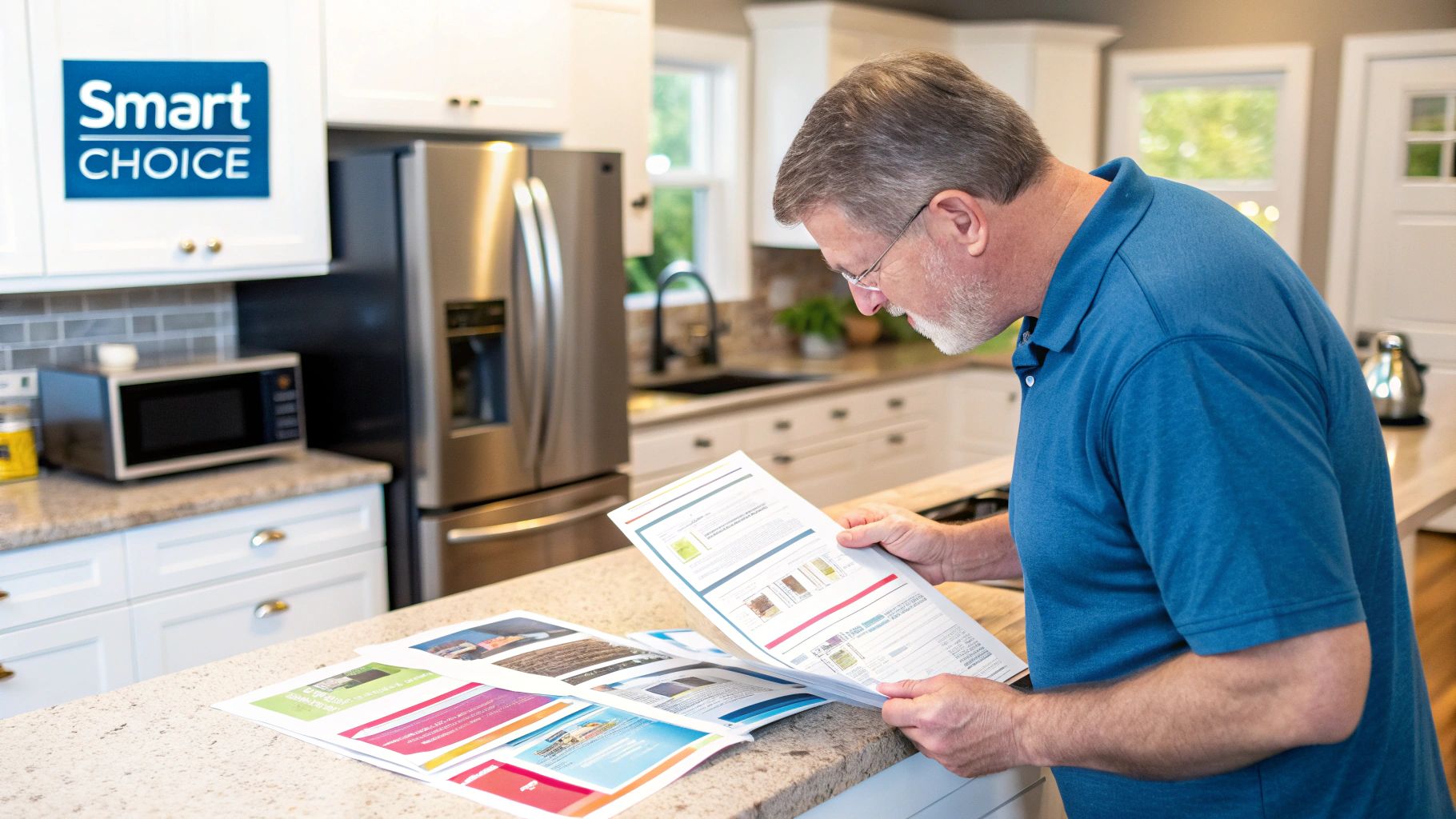
Making a big investment in your home naturally brings up a few questions. When it comes to Energy Star HVAC systems, most homeowners are curious about the same things: cost, actual savings, and the importance of a good installation. Getting straight answers is the best way to feel good about your decision.
We hear these questions all the time, so let's tackle them head-on. Our goal here is to clear up any confusion and give you the confidence you need to move forward.
Is an Energy Star System Worth the Higher Cost?
For most homeowners, the answer is a definite yes. It's true that the upfront price tag can be a bit higher than a standard model, but the long-term savings usually make it a fantastic investment. Think of it as spending a little more now to save a whole lot more down the road.
The math is pretty simple. A more efficient system means lower monthly energy bills. Over the 15 to 20-year lifespan of a new HVAC unit, those savings really add up, often completely erasing the initial price difference and then some. Once you factor in rebates and tax credits, the real cost gets even more attractive.
How Much Money Can I Actually Save?
This is the big one, and the honest answer is: it depends. Your specific savings will be influenced by your local climate, what you pay for electricity, and how ancient your old system was. That said, the EPA gives us some pretty solid numbers to work with.
For example, upgrading to an Energy Star certified central air conditioner can slash your cooling costs by about 15%. A certified furnace can be up to 15% more efficient than even a brand-new, non-certified model. For a typical family, that can easily mean hundreds of dollars back in your pocket every year. A good HVAC pro can run the numbers for your specific home to give you a much closer estimate.
Remember, the Energy Star label certifies the equipment's potential for efficiency. It's the quality of the installation that actually unlocks those savings. A botched install can wipe out all the benefits you paid for.
Do I Need a Special Thermostat?
While you don't have to get one, pairing your new system with a smart thermostat is one of the best moves you can make. A high-tech HVAC system is only as smart as the brain telling it what to do. A basic thermostat just switches it on and off, but a smart one truly optimizes how it runs.
A smart thermostat actually learns your family's schedule. It automatically dials things back to save energy when you're at work or asleep. This kind of intelligent control means your Energy Star HVAC system isn't working overtime when it doesn't need to, which maximizes both your comfort and your savings.
Does the Label Guarantee a Quality Installation?
This is a really important distinction. The Energy Star label is all about the equipment, not the person installing it. The blue sticker guarantees that the unit itself was built to meet strict efficiency standards. It says nothing about the quality of the installation work.
A sloppy installation—things like leaky ductwork or an improper refrigerant charge—can absolutely kill a system's performance. That’s why choosing a licensed, reputable HVAC contractor with a great track record is non-negotiable. The installation is every bit as important as the unit itself if you want to get the comfort and savings you're expecting.
Ready to experience the comfort and savings of a professionally installed Energy Star HVAC system? The team at Florida Cooling Group provides expert installation and maintenance services throughout Palm Beach County. Contact us today for a free estimate!
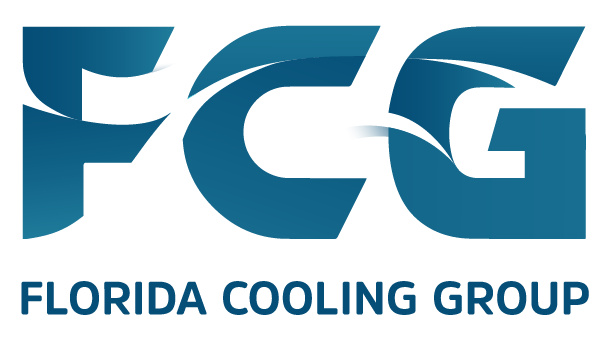
 (561) 400-2205
(561) 400-2205